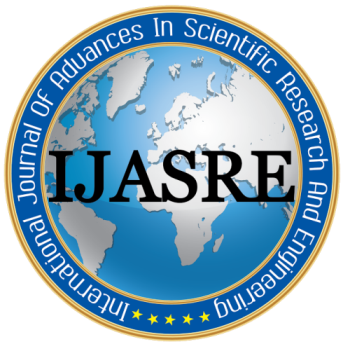IRS-Assisted OAM-MIMO Communication with Partial Arc Sampling Receiving (PASR) Scheme
DOI:
https://doi.org/10.31695/IJASRE.2022.8.10.1Keywords:
OAM-based MIMO Communication, Intelligent Reflecting Surface, Partial angular aperture receiving schemeAbstract
Orbital Angular Momentum-based Multiple Inputs Multiple Outputs (OAM-MIMO) Communication has recently been explored in wireless communication to provide an alternative way of multiplexing different orthogonal OAM modes over a common medium and significantly improve reliability, capacity, and energy efficiency. Although the near-field applications of radio vortex have been successfully verified in a near-field line-of-sight scenario, perfect antenna misalignment should be required to maintain orthogonality, which is difficult to be satisfied in a multipath environment consisting of many non-line of sight (NLOS) paths and LOS path. In addition, beam spread and divergence reduce the transmission distance accompanied by large performance degradation, thus requiring a large aperture size receiving for efficient detection of OAM modes. This paper studies the communication performance of OAM-MIMO with the PASR (Partial Aperture Sampling Receiving) scheme by deploying an intelligent reflective surface (IRS) of a large number of reconfigurable passive elements to achieve an intelligent wireless propagation environment through software-controlled reflection and address the above issues and limitations under the Perfect Channel State Information (CSI). We analyze the concepts of PASR and OAM mode selection by preserving orthogonality according to the required aperture scale, and the influence of the Rayleigh and Rician channels on the system performance of IRS-Assisted OAM-MIMO Communication with the PASR scheme in a multipath environment. The simulation results show that the channel capacity for IRS-assisted OAM-MIMO Communication with the PASR scheme is greatly improved compared with IRS-assisted OAM-MIMO Communication, which can meet the performance requirements, and provide insights into the angular aperture needed for efficient (de)-multiplex OAM modes, and performance limit over propagation distance.
Downloads
How to Cite
Issue
Section
License
Copyright (c) 2022 NDAGIJIMANA Cyprien, Yang Wang , Hailay Teklehaimanot Belay , Hungurimana Olivier

This work is licensed under a Creative Commons Attribution-NonCommercial 4.0 International License.








